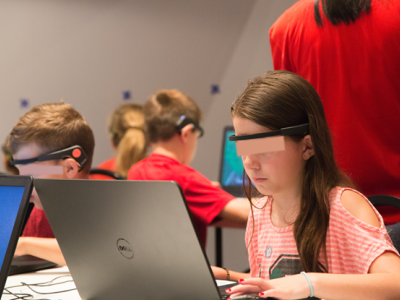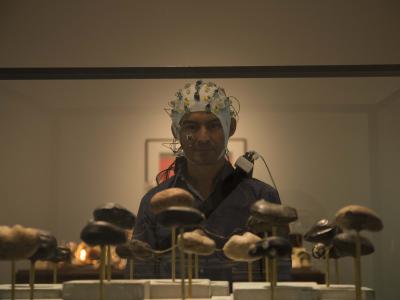Biophysiological Signals
One of the grand challenges in neuroscience is to understand the developing brain ‘in action and in context’ in complex natural settings. To address this challenge, it is imperative to acquire brain data from freely-behaving children to assay the variability and individuality of neural patterns across gender and age.
- Categories:
 2302 Views
2302 ViewsRecent advances in scalp electroencephalography (EEG) as a neuroimaging tool have now allowed researchers to overcome technical challenges and movement restrictions typical in traditional neuroimaging studies. Fortunately, recent mobile EEG devices have enabled studies involving cognition and motor control in natural environments that require mobility, such as during art perception and production in a museum setting, and during locomotion tasks.
- Categories:
 3646 Views
3646 ViewsThis dataset is associated with the paper, Jackson & Hall 2016, which is open source, and can be found here: http://ieeexplore.ieee.org/document/7742994/
The DataPort Repository contains the data used primarily for generating Figure 1.
- Categories:
 2069 Views
2069 Views
Normal
0
false
false
false
EN-US
X-NONE
AR-SA
- Categories:
 17 Views
17 ViewsThis data was recorded for emg based force/Torque estimation. EMG and torque signals were collected during simultaneous, isometric, but continuously varying contractions, corresponding to two wrist DoF. The experiment was carried out in two trials with a 5-min rest in between. Each trial included six combinations of tasks, separated by 2 min of rest to minimize the effect of fatigue. The performed tasks were categorized into individual and combined (simultaneous) DoF to test the ability to estimate isolated torque and torque in two simultaneous DoF.
- Categories:
 118 Views
118 ViewsProblems of neurodegenerative disorder patients can be solved by developing Brain-Computer Interface (BCI) based solutions. This requires datasets relevant to the languages spoken by patients. For example, Marathi, a prominent language spoken by over 83 million people in India, lacks BCI datasets based on the language for research purposes. To tackle this gap, we have created a dataset comprising Electroencephalograph (EEG) signal samples of selected common Marathi words.
- Categories:
 212 Views
212 Views
Objective: As one branch of human-computerinteraction, affective Brain-Computer Interfaces (aBCI) interpretand utilize electroencephalogram (EEG) signalsto achieve real-time monitoring and recognition of individualemotional states, opening new possibilities foremotion-aware technologies and applications. However,the challenge of individual differences in EEG emotiondata severely constrains the effectiveness and generalizationcapability of existing models.
- Categories:
 38 Views
38 Views
Objective: As one branch of human-computerinteraction, affective Brain-Computer Interfaces (aBCI) interpretand utilize electroencephalogram (EEG) signalsto achieve real-time monitoring and recognition of individualemotional states, opening new possibilities foremotion-aware technologies and applications. However,the challenge of individual differences in EEG emotiondata severely constrains the effectiveness and generalizationcapability of existing models.
- Categories:
 18 Views
18 Views





